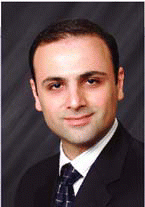Ellen Deutsch, MD, a pediatric otolaryngologist at the Alfred I. duPont Hospital for Children, is excited about simulation’s providing opportunities for adult learners and for their teachers to be rejuvenated as they incorporate simulation in their curricula. Describing a simulation using a high-fidelity infant mannequin, Dr. Deutsch has the resident discern if the infant has aspirated a foreign body in the left main bronchus. The baby’s oxygen level is in the low 90s, with stridor, and only the right chest moves during respiration, indicating a possible obstruction. The learner must select the endoscopic equipment to expose the airway, perform endoscopy, see the foreign body, and remove it. The endoscopist must also have a conversation with the anesthesiologist. If the anesthesia is too light, the baby may experience laryngospasm, or if the endoscopy takes too long without the anesthesiologist ventilating the patient, the baby’s oxygen level could drop. The beauty of simulation is that the learner can do it over repeatedly, turning fumbles into competent fluency, said Dr. Deutsch.
Explore This Issue
September 2008 Using cadaveric bones presents many issues. Drilling human bones is messy, it’s hard to find cadavers, and there are contamination issues and strict disposal protocols to follow. Also, once you drill a bone, you’re done.
Using cadaveric bones presents many issues. Drilling human bones is messy, it’s hard to find cadavers, and there are contamination issues and strict disposal protocols to follow. Also, once you drill a bone, you’re done.-Babak Sadoughi, MD
As an instructor, Dr. Deutsch works with a variety of professionals from different disciplines on developing and implementing various simulation projects, including in situ environments that heighten the learner’s experience of being in real clinical situations. Some of our ENT simulation practice opportunities are very real. In a sophisticated immersion environment, for example, we’re in a mock-up of a patient room, practicing on a high-fidelity infant mannequin with computer-controlled fontanels, vocal cords that can close, and dose-related responses to medication, said Dr. Deutsch.
The increasing variety of simulation tools that are now available allow users of medical simulation to select the most appropriate technology or strategy to accomplish specific objectives, and to provide an activated educational experience based on the individual needs of strategy based on the individual needs of adult learners.
Funding: An Obstacle to Progress
Whereas funding for ENT validation studies remains scarce, medical simulation’s cheerleaders find creative ways around the dollar drought. A number of major medical institutions with simulation centers spread the cost across various clinical, engineering, and IT departments (see www.medsimulation.com/education_partners/centers.asp for a list of centers). Developing a large institutional simulation infrastructure supported is cost-effective and encourages cross-discipline collaboration on new simulations.
Leave a Reply